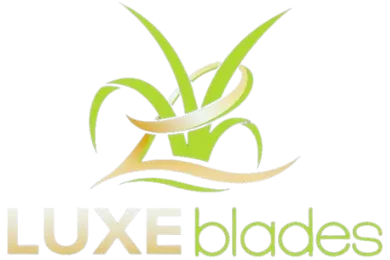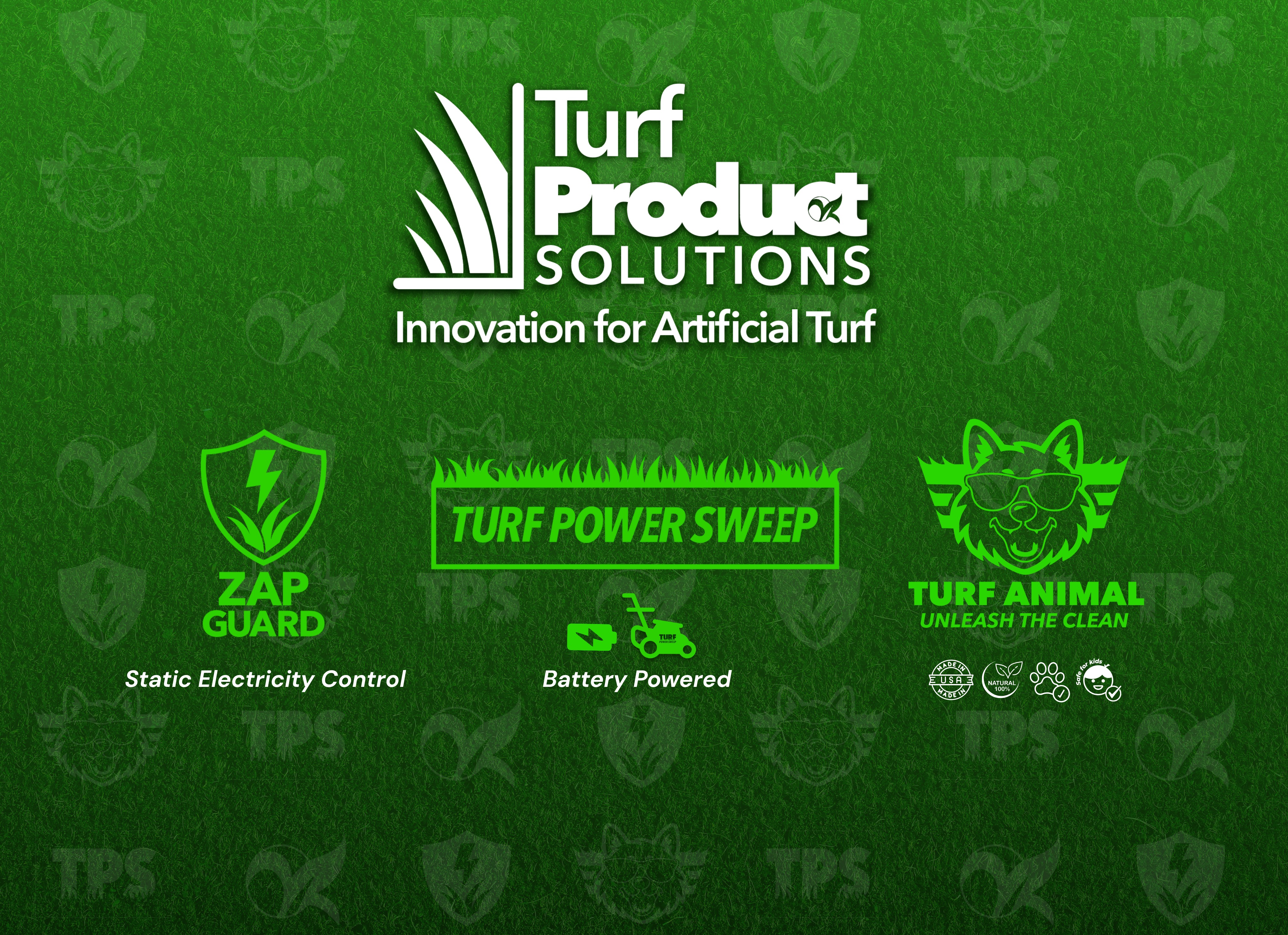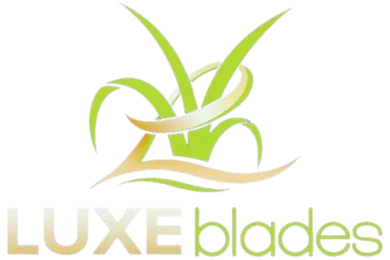972-764-8959
FREE ESTIMATES

MAINTENANCE
RESIDENTIAL
Turf Product Solutions
The Number One Artificial Turf Maintenance Combination.
#1 Artificial Turf Power Broom Battery Powered
#1 Live Enzyme Product Whole Foods Compliant
Zap Guard For Static Electricity In The Artificial Turf

MAINTENANCE
Keep Your Artificial Turf Looking New
At Luxe Blades, we want your investment in artificial grass to look and perform at its best for years to come. Proper turf maintenance not only keeps your lawn beautiful but also helps protect drainage, durability, and overall lifespan. That’s why we recommend a simple but powerful two-step process:
Brooming with the Turf Power Sweep
Cleaning & Protecting with Turf Animal
This easy routine will ensure your turf stays fresh, odor-free, and ready for everyday use.
Step 1: Brooming with the Turf Power Sweep
The Turf Power Sweep is the #1 battery-powered artificial turf broom designed for homeowners, pet owners, sports fields, and commercial spaces. Regular brooming is essential to:
Lift & Fluff Turf Fibers – Keeps your grass blades standing tall and looking natural.
Remove Debris & Dirt – Clears away leaves, dust, pet hair, and everyday messes.
Maintain Turf Drainage – Prevents buildup that can block water flow and cause odors.
Extend Turf Lifespan – Reduces matting, helping your lawn last longer.
How to Use the Turf Power Sweep:
Power on the broom and walk slowly across your turf.
Sweep in multiple directions to stand fibers up evenly.
Use weekly in high-traffic areas or monthly for standard maintenance.
Pro Tip: Always sweep before using any turf cleaner for maximum effectiveness.
Step 2: Cleaning & Deodorizing with Turf Animal
After brooming, it’s time to refresh your turf with Turf Animal, the best live enzyme cleaner for artificial turf. This eco-friendly formula is Whole Foods EcoCompliant, pet-safe, kid-safe, and specially designed for synthetic grass.
Why Use Turf Animal:
Eliminates Pet Odors – Breaks down urine and organic waste at the source.
Deep Cleans Turf Infill – Reaches below the surface for a long-lasting clean.
Eco-Friendly & Safe – Made with natural ingredients, no harsh chemicals.
Reduces Static with ZapGuard™ – Stops turf from shocking you or your pets.
How to Apply Turf Animal:
Mix according to label instructions or use the ready-to-spray option.
Apply evenly across turf after brooming.
Let it soak in—no need to rinse.
Use weekly in pet areas or monthly for general cleaning.
The Luxe Blades Turf Care System
By combining the Turf Power Sweep with Turf Animal, you’ll have a professional-grade turf maintenance system at home.
For homeowners: Keep your lawn green, fresh, and inviting.
For pet facilities & daycares: Maintain a clean, odor-free play space.
For sports fields: Protect performance, drainage, and safety.
Regular artificial turf cleaning and maintenance ensures your investment continues to look amazing while staying safe and hygienic for pets, kids, and guests.
Pro Tips For Stains and other blemishes Below:
The first rule is promptness. It is always easier to clean up a fresh spill than one that has dried and hardened. Remove any solid or paste-like deposit with a spatula or table knife. Blot up excess liquids with paper towels, a clean cloth, or a dry absorbent, such as kitty litter or fuller’s earth. Dry absorbents can then be swept or vacuumed up afterwards. Synthetic fibers have good resistance to staining. However, it is important to realize they are only one part of a sophisticated system of various components designed for overall performance. Some cleaning agents safe for the face fibers can be harmful to other components of the turf system. Therefore, cleaning agents are grouped into two sets, one of which can be used in liberal amounts directly on the turf surface, and the second of which should only be applied by rubbing a cloth soaked in the cleaner in order to minimize penetration of possible harmful agents below the turf surface. In the first group of cleaners which generally can be applied without any special precautions are the following:
A warm, mild solution of granular household detergent or any low sudsing detergent for fine fabrics. Use approximately one (1) teaspoon to one (1) pint of water. This will handle most waterborne stains including: Coffee, Ketchup, Tea, Butter, Fruit Juices, Alcohol, Vegetable Juices, Cola, Milk, Water Colors, Cocoa, Latex Paint, Ice Cream, Blood, Mustard, Urine, Glue, and Dye.
A three (3) percent solution of ammonia in water may be used in lieu of household detergent for more stubborn stains.
Do not use cleaners that contain chlorine bleaches or caustic cleaners (ph above 9) or highly acidic cleaners (ph below 5).
Rinse area thoroughly with clean cold water to remove any traces of soap or ammonia.
Blot up excessive liquid.
The second group of cleaners, where agent must be applied sparingly and care taken to avoid penetration beneath the turf are the following:
Mineral spirits or grease spot remover like perchlorethylene (dry cleaning solution) of the type sold by most variety stores and supermarkets. In general, cleansers in this category should handle most oil-based stains including: Asphalt and Tar, Chewing Gum, Cooking Oil, Shoe Polish, Floor Wax, Lipstick, Motor Oil & Grease, Paraffin Wax, Ballpoint Ink, Nail Polish, Suntan Oil and Crayons. Caution: Mineral spirits and other petroleum-based solvents are flammable. Do not smoke or permit open flames near where these are being used. Be sure the area is well ventilated where solvent cleaners are used.
Animal waste: One easy step just use Turf Animal By Turf Product Solutions
Chewing gum: In addition to dry cleaning fluid, chewing gum can be removed by freezing. Aerosol packs of refrigerant are available from most carpet cleaning suppliers for this purpose, or dry ice can be used. After freezing, scrape with a knife.
Fungus or mold spots: A one (1) percent solution of hydrogen peroxide in water can be sponged on to the affected area. Flush thoroughly with clean water after application.
Periodic brushing (We Recommend The Turf Power Sweep)
Matting of fibers may occur in areas of high foot traffic, especially if fibers have become soiled with dirt and other airborne pollutants.
Periodic “cross brushing” of the turf can help restore the aesthetic appearance of the turf. “Cross brushing” means all brushing activity takes place against the grain, nap, or sweep of the turf fibers. By brushing against the turf, the fibers are “fluffed up”. A brush with synthetic bristles should be used. Never use a brush with metal or wire bristles as these will change the turf fibers.
Periodic vacuuming
If you have a low-pile, non-infilled indoor synthetic turf system installation, periodic vacuuming is recommended. Past studies have shown that 85% of the soil tracked into a building is dry and the other 15% is oily. Vacuums are designed to remove dry soil. The more traffic that your turf receives allows soil particles to work their way down into the turf pile, where they are more difficult to remove. Frequent vacuuming, removes these soil particles from the surface before this happens.
For turf systems that are glued directly to floor without cushioning, a vacuum with a rotation cylindrical brush, rather than a beater bar, should be used to agitate the pile and loosen the soil. Beater bars can damage the pile of direct glued turf, if the machine height adjustment is set too low as well as damage the vacuum itself.
Do not abuse
Although your artificial turf is made of tough, durable fibers, certain precautions should be taken to prevent damage to the synthetic grass.
Lighted cigarettes cannot ignite the turf, but they can damage the turf by fusing the tips of the fibers together. Cigarettes, fireworks, outdoor grills, and open flames should be kept away from the turf. Furniture and equipment with sharp or jagged edges should not be placed on turf as this may puncture or tear the turf.Never leave a parked vehicle idling on the turf.When Driving on turf make sure to turn the wheel while moving not idling.Cap off or remove nearby sprinkler heads. Water from sprinkler systems can leave mineral deposits on turf that may cause discoloration.Make sure turf is not exposed to reflected sunlight from windows as this may fuse the turf fibers together.
Report any minor problem
Minor problems can become major problems quickly if not corrected. Any problem should be reported promptly to Luxe Blades.
The proper care and maintenance program can enhanced the aging, usefulness, and aesthetics of your artificial turf.
Note: Luxe Blades makes no representation, guarantees or warranties, express or implied, regarding the information contained herein.
